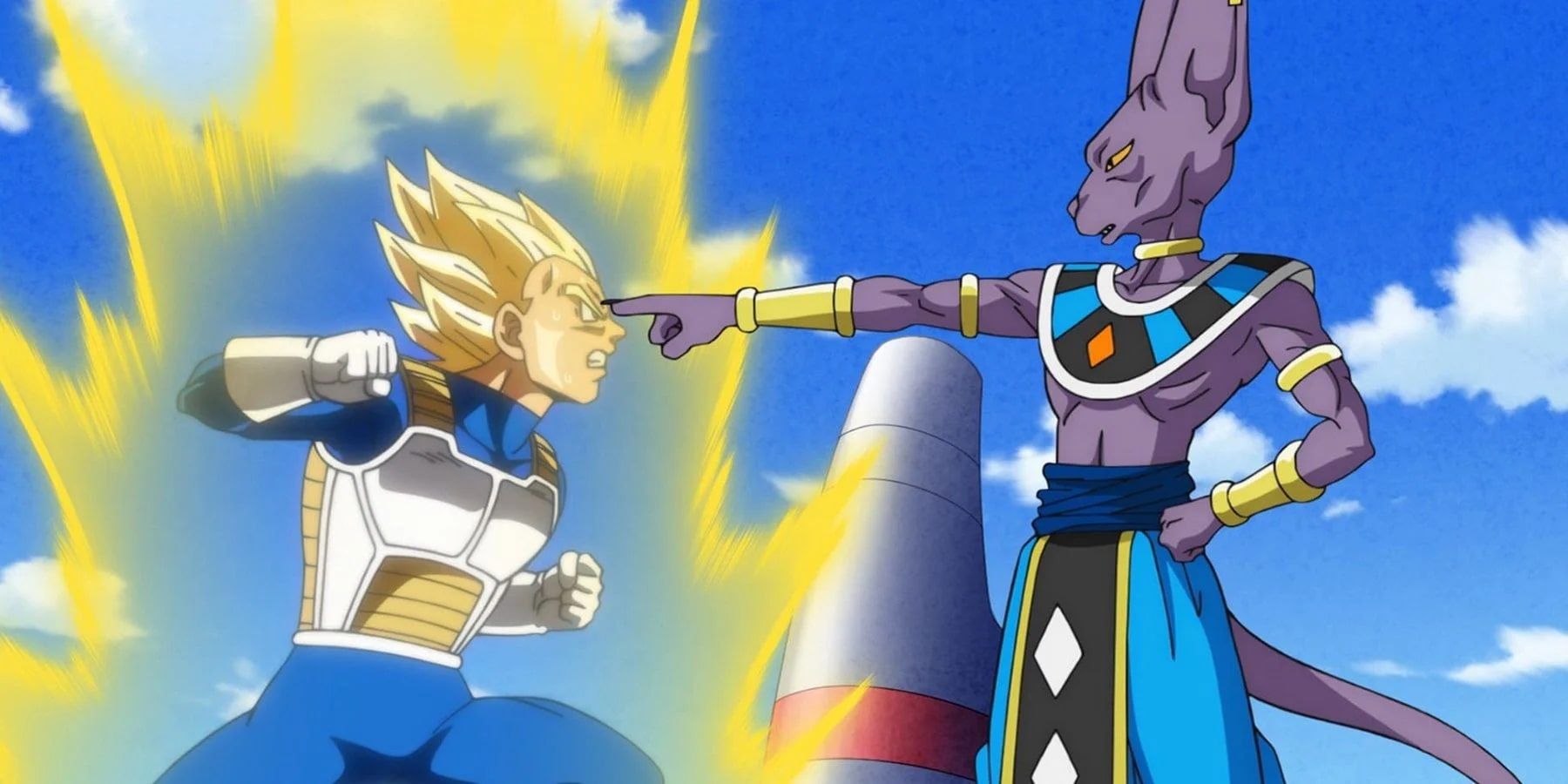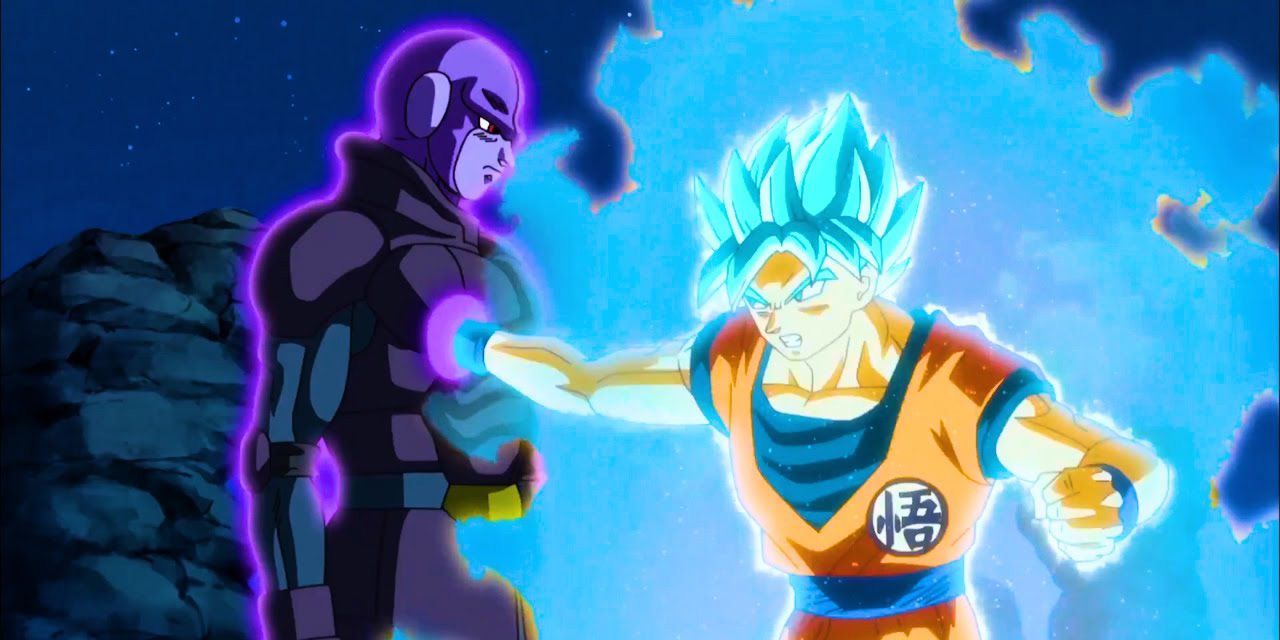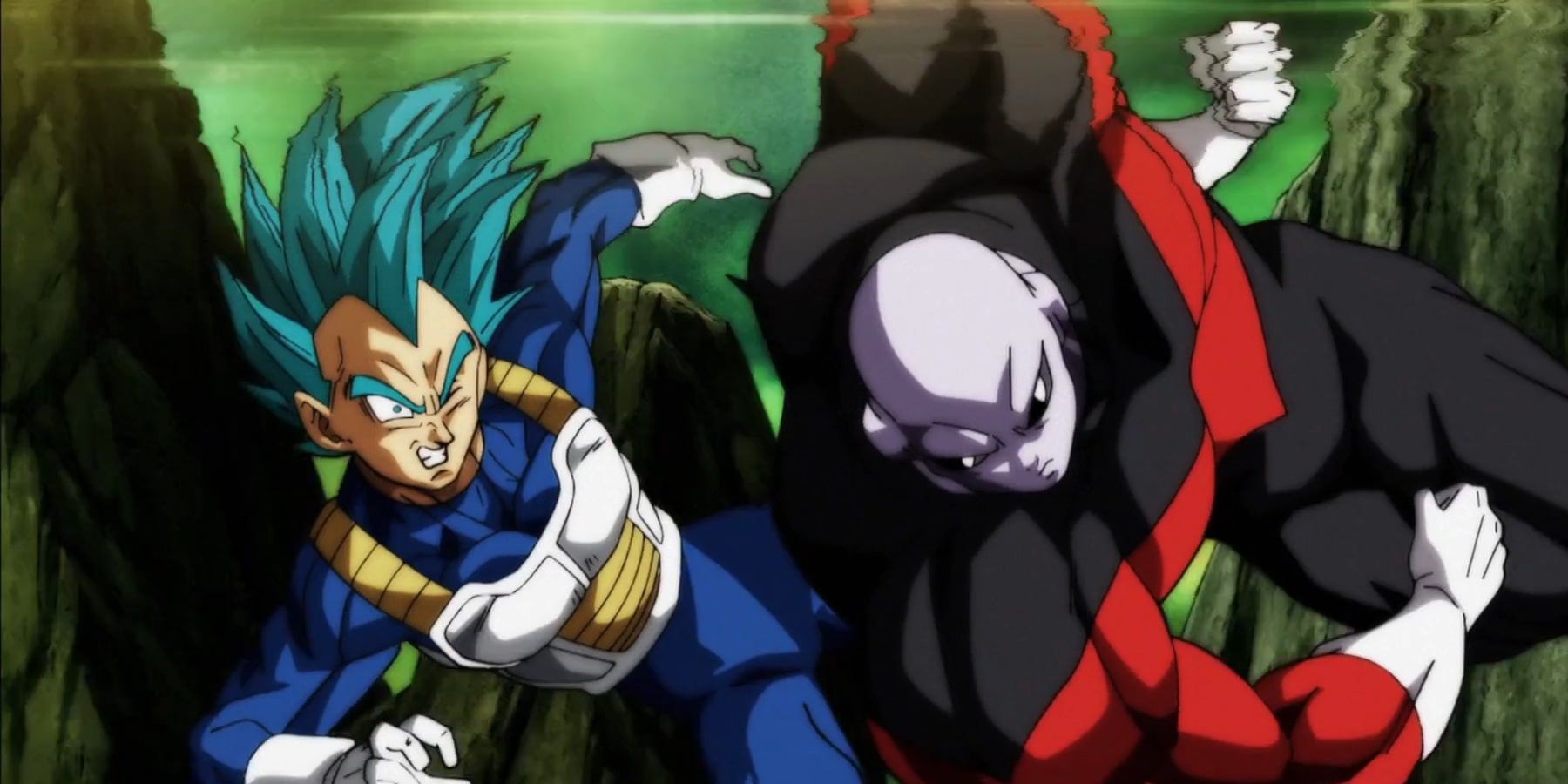After the conclusion of Dragon Ball GT, the Dragon Ball franchise went into a long period of dormancy, relying mostly on video games to fuel its continued popularity. It seemed for a long time as if true canon Dragon Ball material was a thing of the past. Aside from a single short film called Dragon Ball: Yo! Son Goku and His Friends Return!! released 2008 only in Japan, Japan saw now new media from GT's 1997 conclusion to 2013's release of Dragon Ball Z: Battle of Gods. America waited only a bit shorter. The English dub of GT concluded in 2005, with Battle of Gods premiering stateside in 2014.
Battle of Gods promised to bring new excitement to the Dragon Ball fanbase, and that excitement increased with Dragon Ball Z: Resurrection 'F''s release in 2015. Then, a new, Dragon Ball anime premiered: Dragon Ball Super. On top replaying the events of these two movies with added content, it added several entirely new arcs to its lineup, concluding at a total of 131 episodes. The manga, which has a slightly different story, is still ongoing, with new chapters released monthly. This massive outpouring of new Dragon Ball content had major implications for the franchise's future as a whole.
What Makes Dragon Ball Super Different?
It isn't hyperbole to say that Dragon Ball Super saved the franchise. Dragon Ball GT, and to a lesser extent Z, haven't aged gracefully, and the continued rehashing of their respective stories through video games and Dragon Ball Z Kai likely wasn't going to be enough to keep the franchise relevant in the long run. Dragon Ball Super isn't perfect, but it is objectively the best entry in the franchise so far, taking what worked about each previous series and (for the most part) discarding what didn't.
Dragon Ball Super follows Dragon Ball Z's lead in taking the story to a cosmic scale, and explores the concept of gods and the universe's rulers. It turns out that there are 12 separate universes, with each having its own Supreme Kai, God of Destruction, and Angel. Above them are the Grand Priest and the Omni-King Zeno, who rules over the entire multiverse and can erase universes with a thought. This is all revealed gradually over the series' various arcs, with Universe 7's (the Z Fighters' Universe) God of Destruction Beerus and his attendant Whis, its angel, being introduced as major characters. In order to compete with this new tier of power, Goku and Vegeta each achieve their own new forms, Super Saiyan God and Super Saiyan God Super Saiyan, which turns their hair and aura red and blue respectively. With the new lore out of the way, things otherwise are pretty standard for Dragon Ball.
What Makes Dragon Ball Super So Good
While not every arc is amazing, with the Future Trunks Saga being particularly drawn-out, overall Dragon Ball Super's plot lines and villains are a lot more satisfying and brisk than Z. While some enemies still take forever to defeat, there is significantly less padding of fights with dialogue, dust clouds, and static shots compared to previous entries. At their best, the fights look cinematic, rivaling some of the best in One Piece and Naruto. The visuals for the are bright and colorful, and while they're a bit more cartoony than Z or GT, they still feel comfortably in Dragon Ball's wheelhouse.
Super also brings back much-needed attention to major characters in early Dragon Ball that Z and GT neglected, bringing back favorites Piccolo, Krillin, Tien, and Master Roshi into battles and storylines. The Androids are also given some much-needed attention, and even Frieza becomes a major recurring character, to the overall benefit of the series. These characters are brought back and made relevant without stealing the screen from Goku, Gohan, and Vegeta, and it makes the whole series feel more balanced as a result. While his arc is the series' weakest, the return of Future Trunks was also a fantastic idea.
Not only does Dragon Ball Super treat its longest-standing characters better than its predecessors, it also introduces some of the best new characters the series has seen. All the Gods of Destruction are varied and interesting, although it is disappointing that so far most have only been seen fighting in the manga. And of course the series' two tournament arcs, especially the final Tournament of Power Arc, (which were treated as afterthoughts in Z and GT to their detriment) introduce some of the greatest fighters from across the multiverse. Highlights include the assassin Hit and the Saiyans Cabba, Caulifla, and Kale from Universe 6, the Pride Troopers from Universe 11, and Ribrianne from Universe 2, a hilarious caricature of your typical magical girl with a weird twist. And of course, there's the cowardly but strong Galactic Patrolman Jaco, who starred his own manga written by Akira Toriyama, which is a prequel to the entire Dragon Ball franchise.
It should come as no surprise that Akira Toriyama had major input over the Super's story and characters, something which he didn't in GT, and as a result Super feels like a return to form in the best possible way. The fact that the anime ended while the manga remains ongoing means the door also remains open for future anime, to the franchise's overall benefit.
Flaws and Where We Go From Here
It should be noted that despite everything mentioned above, Dragon Ball Super still isn't perfect. The characters in the TV release can be comically misshapen, to the point of spawning memes, but the Blu-ray release improves this measurably. While it does make certain characters more relevant again, other characters like Trunks, Goten, and Majin Buu are completely underutilized. The buildup to the first arc is also entirely too slow, and there's too many unnecessary filler episodes. That said, the Dr. Slump crossover episode, where Arale beat Vegeta easily, is one of the greatest things Akira Toriyama has ever helped create.
The Future Trunks Arc is definitely the Super's weak spot. Its timeline-related shenanigans are far more confusing than the similarly-themed Cell Saga, and its villain, Zamasu, is immortal and proved impossible to beat in battle. Instead, Zeno is the one who is forced to erase him from existence, making the entire extended conflict seem unnecessary. Zamasu is also among the most boring and stereotypical Dragon Ball villains. That said, the battles against Zamasu and Goku Black in this arc, while long, are not too badly padded, and the return of Vegito is a big plus.
Since the end of Dragon Ball Super, one movie, Dragon Ball Super: Broly, has been released, and another, Dragon Ball Super: Super Hero, is set to release in June. Unfortunately, there is no word or confirmation of another episodic Dragon Ball anime as yet, but unlike in GT's case, there's plenty of Toriyama-approved material to work with. Because of Dragon Ball Super, the franchise has managed to exit dormancy with aplomb and has an assuredly bright future.




